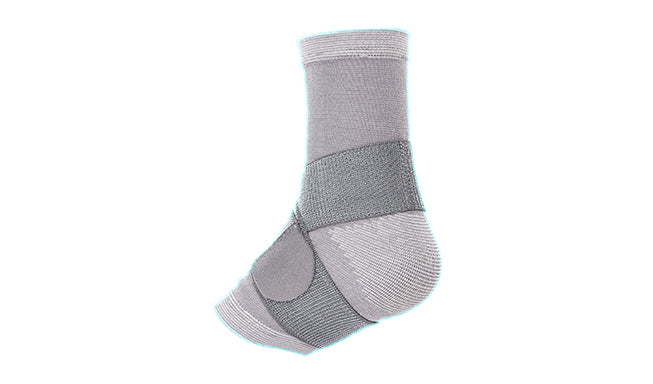Our ankles carry us through every step from jumping to running, yet we rarely think about them until something goes wrong. A sudden twist on the stairs, a misstep while playing high-demanding physical activities or sports such as basketball, tennis, football, etc. An awkward landing in gymnastics can leave you with a painful ankle sprain or injuries that disrupt your daily simple activities. That’s where an ankle brace becomes your silent hero, offering your twisted or injured ankle stability, support, and the confidence to move freely again. But simply putting one on isn’t just about strapping it on and hoping for the best. Whether you’re recovering from a fracture, managing ligament damage, or preventing future injuries. You should be aware of how to wear an ankle brace correctly. Because using it effectively is key to faster healing and long-term joint health.
In this blog, we’ll share simple tips for using ankle braces effectively, so you can recover faster and move with ease.
Choose the Right Type of Ankle Brace
Not all ankle braces are designed equally. So, the right choice depends on your injury, lifestyle, and level of activity:
Ankle support brace: It provides gentle compression and stability to weak, injured ankles. The Leeford Ortho ankle brace is ideal for mild sprains or general support during daily activities.
Ankle brace for fracture: One should choose an ankle support with a splint in case of an ankle fracture. It immobilizes the ankle and provides rigid support after fracture or surgery.
Ankle brace for ligament tear: It provides firm compression and targeted support to help ligaments heal properly.
Sprained ankle brace: The ankle wrap helps reduce swelling, improves circulation, and supports natural movement as you recover.
Basketball & gymnastics ankle braces: During sports or gym activities, these ankle braces are effective in preventing ankle twisting. Also, it enhances joint stability during high-impact activities.
Orthopedic ankle brace: It is highly recommended by doctors for long-term or post-surgical use.
A lace-up ankle brace is a versatile option that combines support with flexibility, making it great for both injury recovery and prevention.
Learn How to Wear an Ankle Brace Properly
Are you wondering how to know if an ankle brace is on correctly? Only if your ankles are stable yet feel comfortable and allow you to walk pain-free without excessive restriction. You can do this by following a few easy steps to get the right fit and heal.
- To reduce the risk of friction, always wear the ankle brace over thin socks. Choose breathable materials for sweat-free comfort that lasts for long-term wear.
- To ensure the brace provides even support, always place it around your ankle bone.
- Adjust for a snug fit; it should neither be too tight nor too loose. Always feel supported, not numb or tingly.
- In case of a lace-up ankle brace, make sure that the straps or laces are fastened properly for the right amount of compression and warmth. As it is essential for quick recovery.
Find the Right Wearing Duration
Generally, people ask, “How many hours a day should I wear an ankle brace?” The answer to this common concern totally depends on the severity of the condition:
- For acute injuries, such as sprains or ligament tears, wear the brace as recommended by your doctor. It usually varies from 6 to 8 hours a day, or during heavy and weight-bearing activities.
- If you're going to wear it for sports like basketball or gymnastics, only wear it during training or practices.
- Avoid wearing ankle support all day or at night unless advised to do so by your healthcare expert. As your muscles still need movement to stay strong.
How to make an ankle brace more comfortable?
If you are new and don't know how to wear it correctly for the maximum support your ankle needs. So, the small adjustments can make a big difference.
- Choose a breathable, high-quality neoprene ankle support brace for better healing and maximum comfort.
- Check for changes as needed to prevent swelling and inflammation, especially when you're active.
- Ensure the skin under the brace remains clean and dry.
- For extra comfort, always wear ankle sleeves or socks that wick away sweat or moisture.
- If the pain persists, see your doctor. It could mean that the brace is the wrong size or type.
Maximize Healing with Ankle Braces and Strengthening Exercises
An ankle brace is not a permanent fix for pain; it is an orthopedic support that helps with healing. As you improve, try to gradually reduce your reliance on it. Add some gentle ankle exercises to help you get stronger and more flexible. If you play basketball and wear ankle braces, or if you dance and wear gymnastics ankle braces, you should focus on balance and proprioception training to avoid getting hurt in the future.
Final Thoughts
You might be slower with an ankle injury, but you don't have to stop. Keep walking, running, jumping, and dancing to get back to your routine with confidence. Never forget to choose the ankle support brace wisely and carefully. Just stay patient because the Leeford Ortho ankle support, ankle binder, or ankle binder with splint is more than just a piece of gear; it is an effective companion on your healing journey. Therefore, it's essential to wear ankle support correctly to achieve the optimal level of healing. No matter if you are recovering from a ligament tear, returning to sports after a sprain, or simply trying to prevent further injury. Take care of your ankles today, and they'll take you farther tomorrow.





